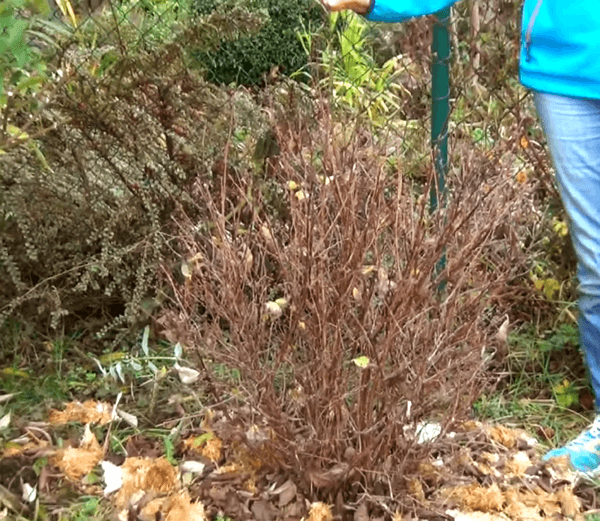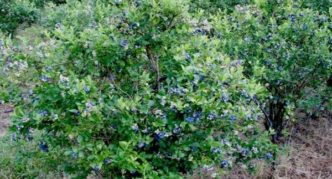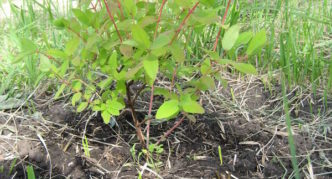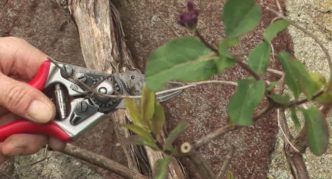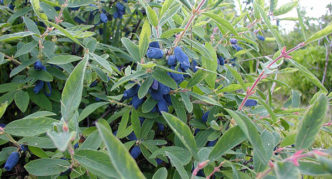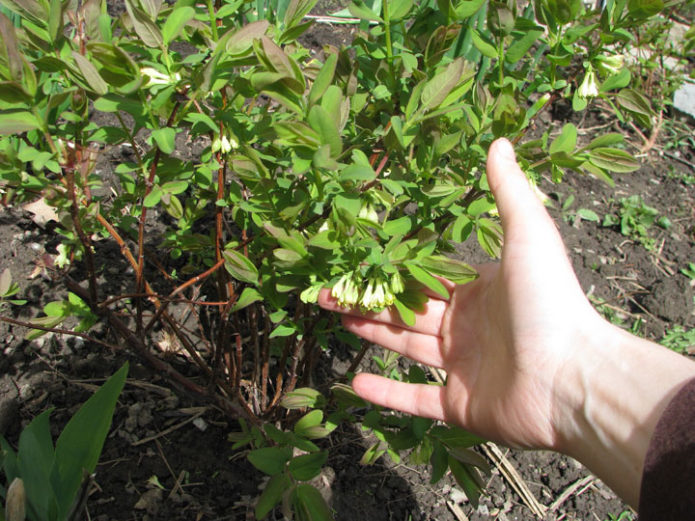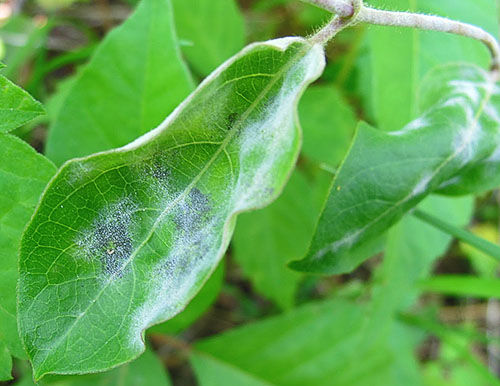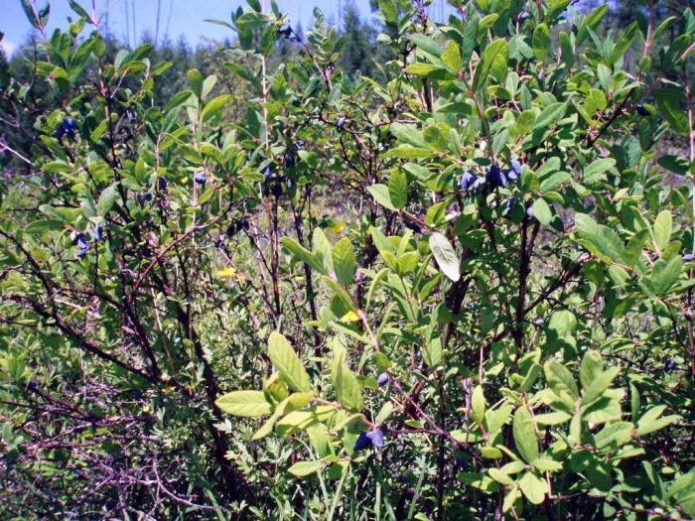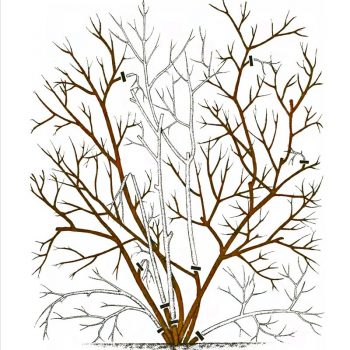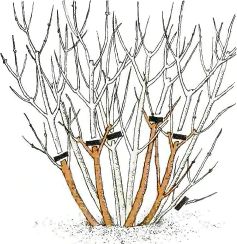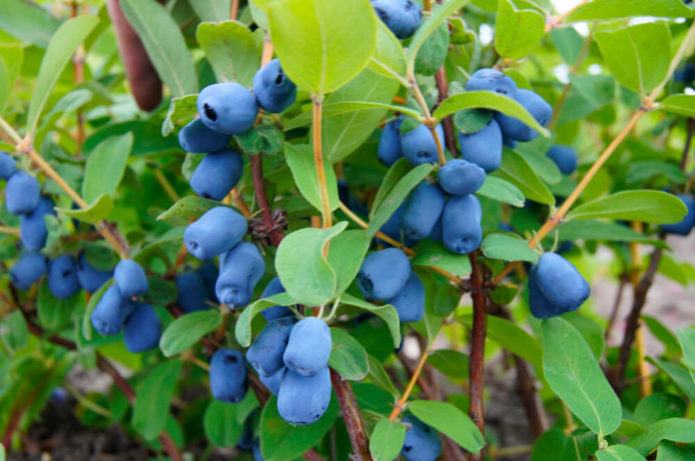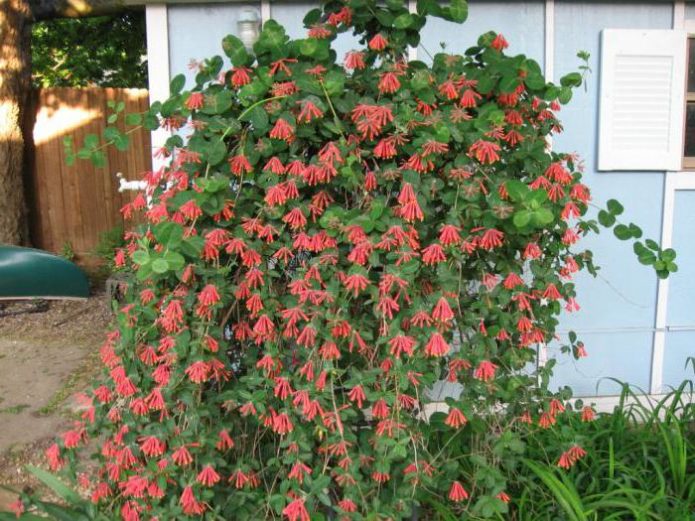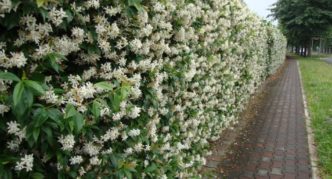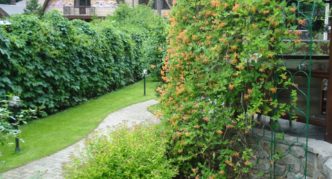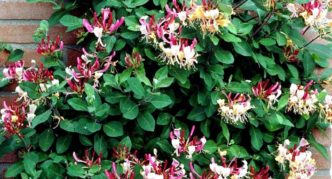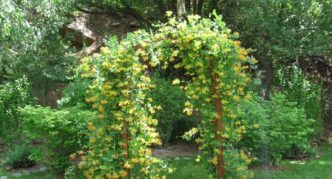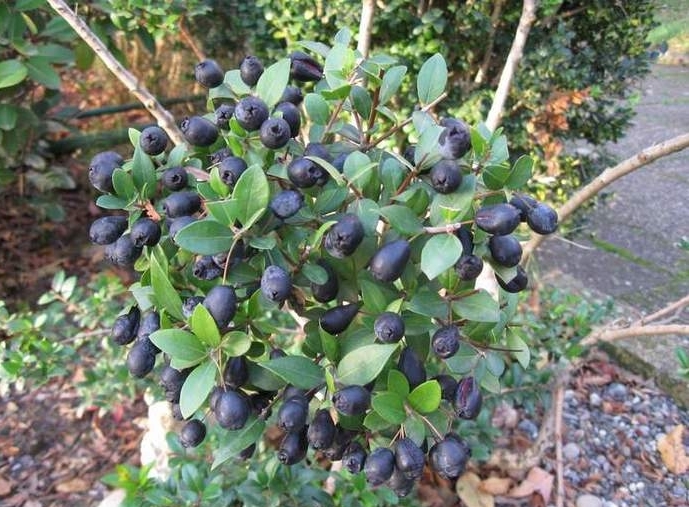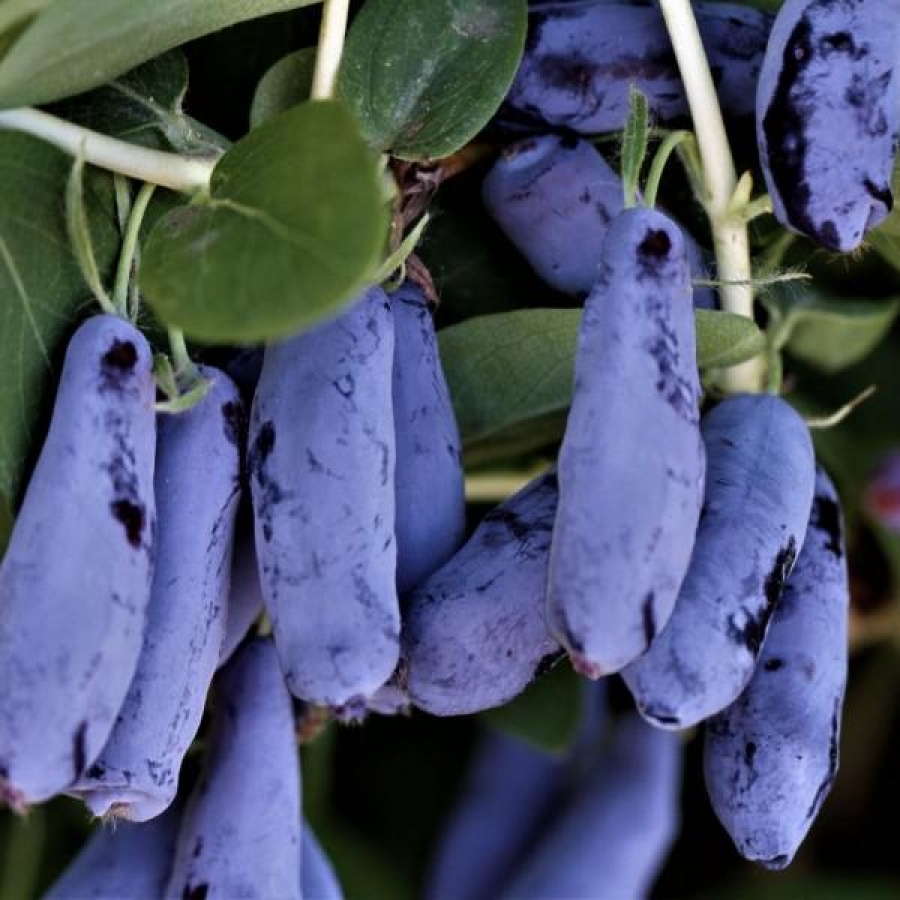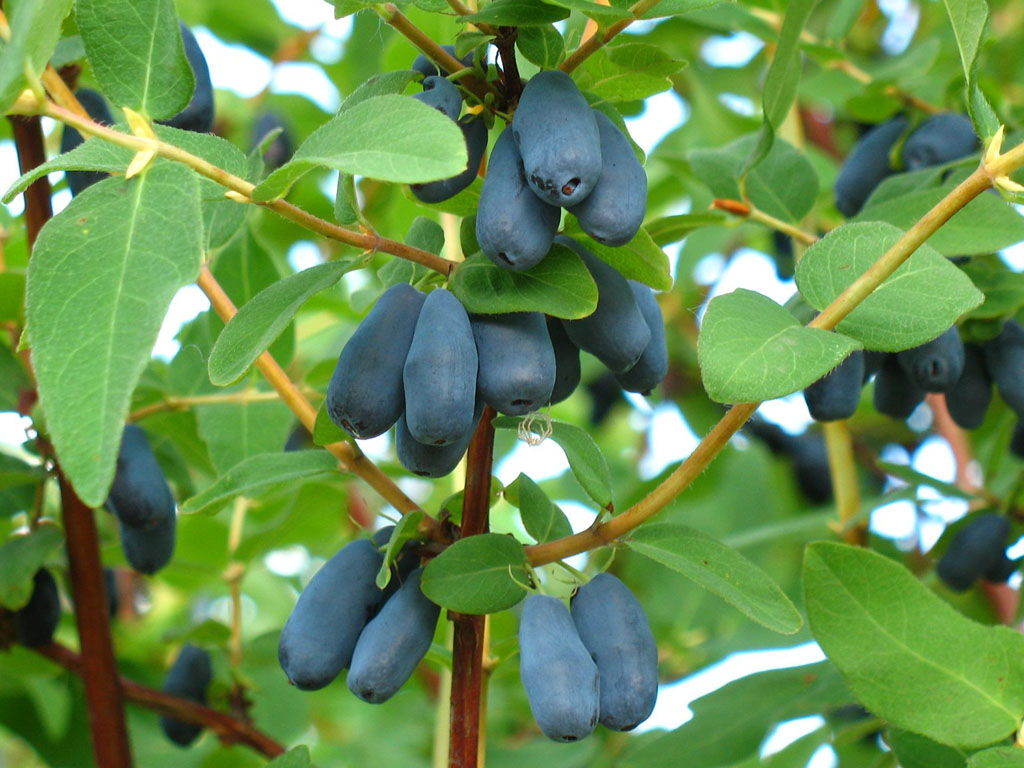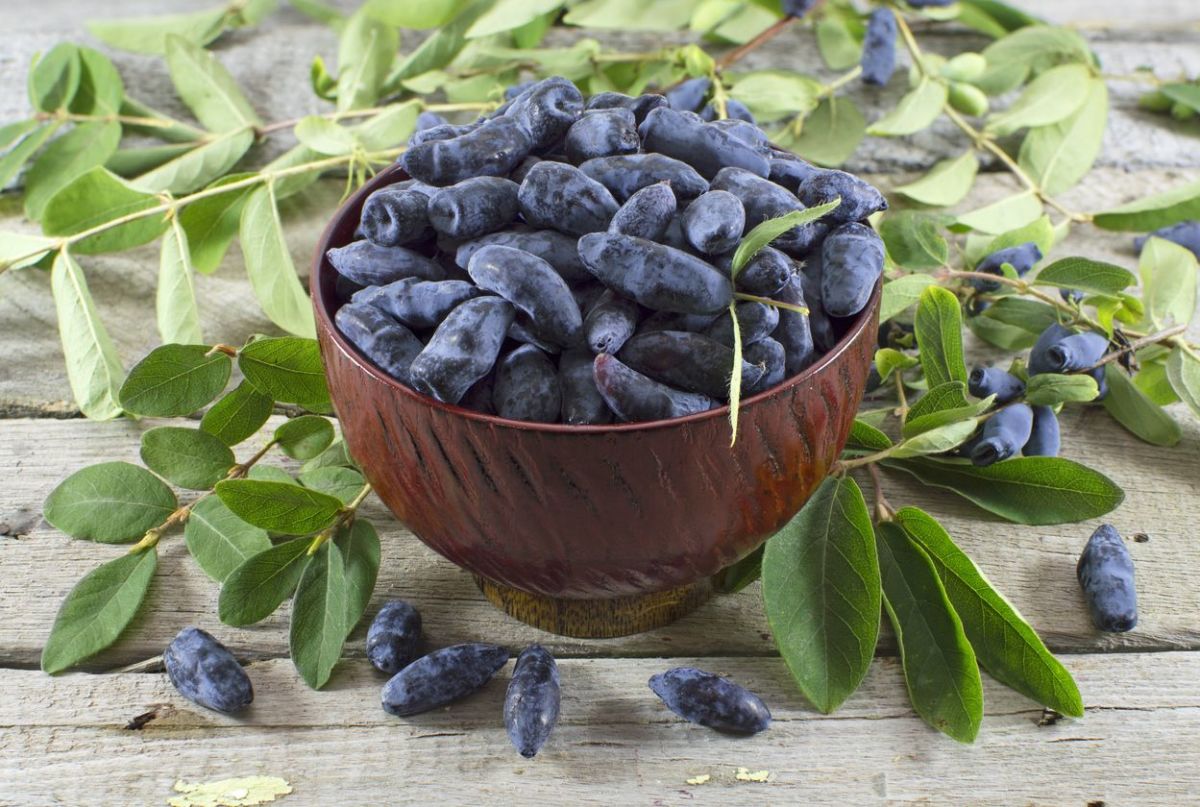Honeysuckle in bloom! What a miracle! A living wall of greenery and tiny flowering corollas in Russian gardens in May can compete with Japanese sakura in beauty. White-yellow-pink flower crowns densely cling to country hedges, pillars of arbors, verandah pylons, creating a natural ornament that can conquer even the most ardent skeptics.
Content
The value of pruning for honeysuckle
The splendor will not last long - two weeks. And in order to enjoy it to the fullest, without losing a single flowering basket for viewing, it is necessary to care and prune the bush. Pruning is carried out for sanitary purposes, aimed at rejuvenation, activation of growth, formation of the apical crown of the plant, pest control and increase in yield, if the shrub is a fruit and berry variety.
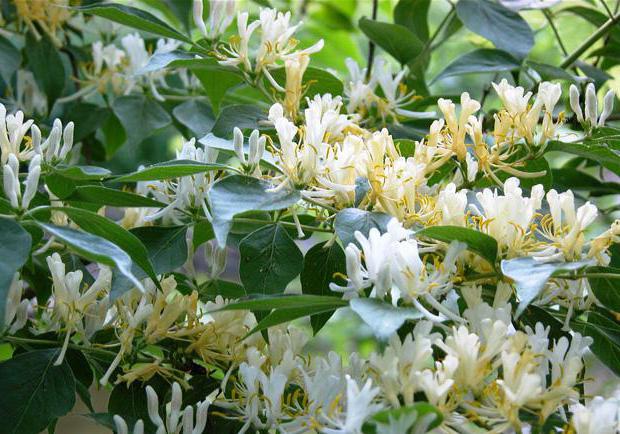
In the flowering season, small baskets of flowers densely stick around the bush and become a real miracle.
Without pruning and untimely removal of diseased, frozen and dried-up branches, any shrub, including honeysuckle, turns into a semi-wild culture, in which the fruits shrink, the branches turn into lifeless lashes, and the general appearance is associated with a neglected orphaned garden. Honeysuckle, neither fruit nor decorative, will not tolerate such an attitude towards itself. The first year without leaving, she will somehow survive, reluctantly. But in the second year it will turn into a skeleton, the thick of which will be formed by naked and diseased branches, and the surface - rare shoots and inflorescences, painfully grabbing the rays of the sun and the warmth of the air in the struggle for life. Then you won't want to talk about the miracle of flowering. We will have to urgently rescue the plant from trouble, applying all the measures of urgent garden assistance.
Classification of varieties of pruning
But, nevertheless, it is better not to bring your garden pets to an extreme state.
According to the purpose of appointment, pruning is classified into:
- sanitary and wellness,
- thinning-rejuvenating,
- crown-forming pruning,
- easy shortening pruning.
How to choose a fertilizer for honeysuckle, depending on the season:https://flowers.bigbadmole.com/en/yagody/chem-podkormit-zhimolost-vesnoy.html
Fundamental rules for pruning
Depending on the time of this work, a distinction is made between spring and autumn pruning. It is important to understand which season is best for certain pruning manipulations. And there are some fundamental rules here:
- Bushes of all ages require sanitary pruning. Indeed, even a year after planting, an unsuccessful overwintering is partially possible.And during the growing season, other natural factors are possible that will adversely affect honeysuckle: drought, waterlogging, pest infestation. Therefore, if you want neatness in the garden and a good harvest, then dried and weak branches will have to be removed both in spring and autumn.
- Only bushes that have reached the age of 4–5 years after planting can undergo thinning pruning in autumn. During this period, the bush will gain strength and spread its branches widely, which he will have to move a little for the good. Manipulation is relevant both for decorative tall shrubs that serve as hedges or garden decorations, and for low-growing fruit-bearing varieties. For the latter, pruning is also important because it will contribute to the growth of new buds, and, consequently, the formation of a larger number of fruits.
- Spring pruning of fruit-bearing honeysuckle varieties can only be sanitary to remove dried twigs. Since honeysuckle wakes up very early after winter and immediately begins to form leaves and an ovary, thinning pruning in April-May will cause significant damage to shoots, which will negatively affect yield.
- Pruning in order to form bushiness and crown of a tall ornamental bush can be carried out several times per season. The first time - in early spring in March or early April, before the start of sap flow in the trunk. Further - as the side shoots grow, falling out of the pattern of the drawing or outgrowing the limits of a certain height.
- All sections with a diameter of more than 1.5 cm, made on the living tissue of large branches, must be treated with garden varnish or paint. This is necessary both in order to prevent parasites or microbes from entering the wounds, and in order to speed up the healing of scars.
Photo gallery: pruning as a bush rejuvenation tool
- This bush is still young, but already thickened - autumn pruning is simply necessary for him
- Everything is in order in this bush: it does not need pruning
- After pruning, large live sections of the trunk are processed with garden pitch
- Pruning promotes the formation of new shoots and ovaries
Honeysuckle pruning varieties table
Based on these rules, a calendar of work on the honeysuckle bushes for the season is drawn up.
| Young bushes from 1 to 4 years old | Mature fruiting bushes from 4 to 30 years old | Decorative varieties of honeysuckle (honeysuckle) | |
| Sanitary pruning in spring and fall | Twice a season: early spring and late autumn. Dried and diseased branches are removed. | Twice a season: early spring and late autumn. Dried and diseased branches are removed. | Twice a season: early spring and late autumn. Dried and diseased branches are removed. |
| Thinning rejuvenating pruning in autumn | Not carried out | Sanitary pruning is combined with thinning. It is carried out only in the fall, after the bush sheds its foliage. Extra branches at the root and lateral branches are cut off. | It is carried out in the fall in order to rejuvenate the bush and remove thickening. |
| Pruning for crown formation | Not carried out | Not carried out | Held twice in summer. The first time is right after flowering. The second time - 1–1.5 months after the first pruning as needed. |
| Shortening pruning of seedlings after planting in the ground | On seedlings with 2–5 frame branches, shortening pruning is carried out selectively. | Not relevant | For the active formation of new shoots, the apical part of the young plant is selectively cut off. |
| Urgent sanitary pruning | It is carried out immediately upon detection of traces of honeysuckle diseases or pests. It is used up to the complete uprooting of the plant, if other methods problems do not solve. | ||
Sanitary pruning
Sanitary pruning is aimed not only at removing dead branches, but also at combating diseases and pests, of which honeysuckle has a lot.Leafworms, aphids, fingerworms, scale insects, and moths can treat foliage and shoots in such a way that uprooting remains the only solution that will rid the garden of parasites. However, if you can still fight for the bush, then this should be done immediately. For this, the following treatment measures are carried out in the complex:
- remove all affected shoots, cutting them off with part of a healthy section of the stem - after all, invisible eggs and larvae could remain on it;
- carry out a chemical attack on pests with the help of industrial pesticide preparations or folk remedies such as tobacco broths or onion-garlic infusions;
- they collect and burn the affected foliage, stems, shoots, and dig deep into the ground in the fall, ruining the holes of pests and pulling their underground larvae to the surface, where many die from the coming cold weather.
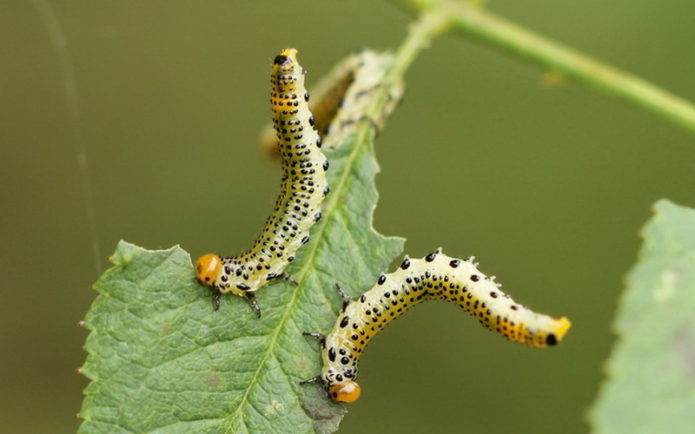
Honeysuckle is affected by caterpillars. Areas occupied by pests should be pruned with further burning
Diseases of honeysuckle include malignant fungal lesions: ramulariasis, cercospora, tuberculariosis, parasitic leaf spot. Control methods are also carried out in a complex, where fungicide treatment and sanitary pruning go hand in hand.
We wrote in detail about preparations for treating plants from diseases and pests in the article on the protection of vineyards. The proposed methods are also suitable for honeysuckle:https://flowers.bigbadmole.com/en/yagody/vinograd/obrabotka-vinograda-osenyu.html
During a double or even triple complex of therapeutic measures, the bush is carefully observed in order to prevent the spread of the fungus to healthy areas of the land. And with the onset of autumn and next spring, in addition to the usual pruning, they also carry out preventive hardening of the plant. To do this, spray the bushes with honey-iron-containing preparations, dig up the soil under them with the introduction of ash and Bordeaux liquid.
Thinning-rejuvenating pruning
With sanitary pruning, everything is more or less clear, let's move on to thinning pruning. Of course, there is a lot in common between them, because the ultimate goal of both is to give impetus to the growth of new shoots, to awaken all the internal forces of the plant and direct them to the formation of enhanced flowering and fruiting. But there is also a difference.
Honeysuckle's natural thickening ability
The main difference is that with thinning pruning, unlike sanitary pruning, healthy lashes are removed, not sick ones. To defuse the middle and sides of the bush - this is the task that is posed to gardeners.
Honeysuckle, originally grown only in the wild, has adapted to surviving lush grasses and bushes by sprouting hundreds of side and root shoots. The branches growing tightly could not develop fully, especially in the center of the bush, where the thickening exceeded all reasonable limits. Neither bees nor bumblebees could get inside, so pollination took place only on the periphery. Thus, the rules of natural selection worked for the strongest, but not for honeysuckle. With the arrival of shrubs in cultivated gardens, his life has improved significantly. After all, artificial pruning with the removal of defective trunks in the center and on the periphery of the bush gave the culture the opportunity to fully exist and produce crops both on the edging branches and on the central shoots.
Pruning has become the life-saving straw that has taken the crop to a new level of flowering and fruiting.
Garden rejuvenation
As mentioned above, thinning pruning is the fall concern of gardeners. It is started after leaf fall in honeysuckle, but before the onset of frost on the soil. At this time of the year, the bush does not receive intensive nutrition, slows down or stops growing altogether, which means that it can easily undergo a traumatic operation.
A young plant with a large volume of extra stems, as a rule, cannot yet accumulate, and therefore there is no need to subject it to the procedure. But bushes older than 5-6 years should be rejuvenated on an ongoing basis. The average duration of the period of good fruiting of honeysuckle is 25-30 years. After this period, the bush will not die, but the yield will decrease significantly. The best solution for updating the honeysuckle garden is, of course, its constant planning, in which new young bushes are planted every year and sick and very aged specimens are sent to rest.

Planned planting of new honeysuckle bushes and removal of old ones will give the garden a neat look and maintain yields at a decent level
Thinning pruning technology
The task of the autumn thinning pruning is to remove branches from the lateral and central sectors of the bush, which create impassable thickets there, reducing flowering, pollination and crop yield. Ideally, after trimming, there should be a skeletal silhouette of 5-7 healthy skeletal trunks.
Caring for honeysuckle in autumn and preparing the plant for winter:https://flowers.bigbadmole.com/en/uhod-za-rasteniyami/zhimolost-uhod-osenyu-podgotovka-k-zime.html
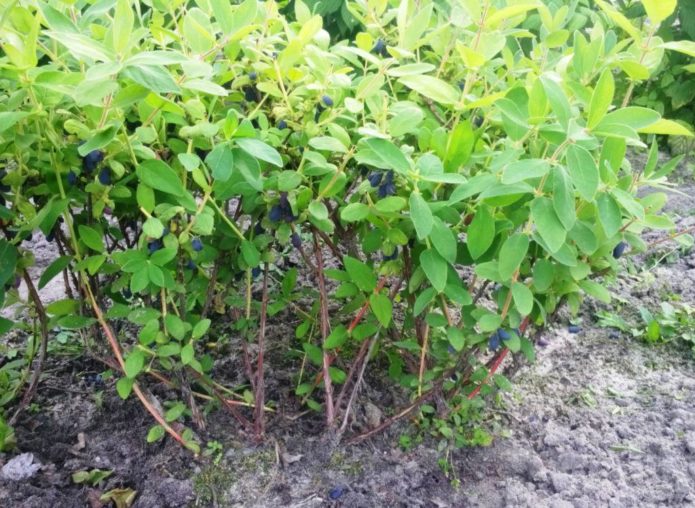
A bush with 6-7 skeletal trunks is considered optimal. With this structure, only lateral weak and horizontally growing branches near the ground are cut
The procedure begins by examining the lower branches of the bush. It is necessary to determine the main skeletal branches on which the entire vegetative process will be built in the next season.
Excess trunks, even healthy-looking ones, must be cut out without regret. Extra trunks include the following:
- strongly curved, deformed and other branches that have lost their original shape;
- Older branches with many knots or notches
- branches lying horizontally on the ground and creating a formless bush;
- Branches in the lower tier of the bush, interfering with its correct formation.
All of them are cut at the very base of the above-ground part of the trunk. The manipulation is carried out with a sharp pruner.
At the end of this stage, the bush is again examined from bottom to top - this time to look for small shoots that grow incorrectly and densely on the remaining skeletal branches. Those of them that grow close to each other are removed, especially if they are directed towards the center of the bush or are knocked out of the general harmony of the haircut. Annual shoots are left in the upper part of the stems - after all, it is on them that the next year's harvest will be formed.
Thinning pruning, performed in the described way, is relevant for young and middle-aged honeysuckle bushes, that is, approximately within the boundaries of its life from 5 to 20 years. Moreover, it is not necessary to carry out it annually - it all depends on the condition of the bush and the rate of formation of "extra trunks"
Stump trimming
For bushes more burdened with life, an effective procedure for their rejuvenation is the so-called stump pruning.
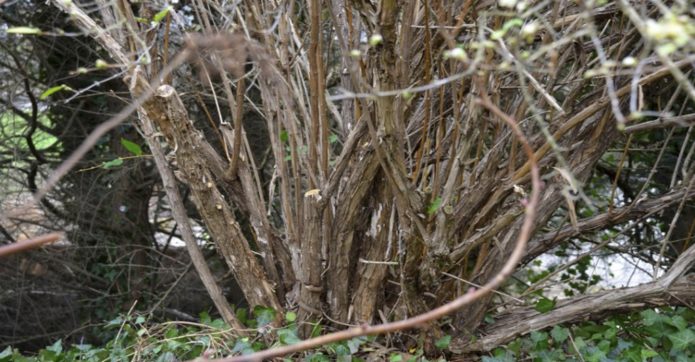
This bush has not been cultivated for a long time. The best option would be to trim it "under the stump"
If the old bush turned out to be very overgrown and acquired over the years of its existence more than 15–20 skeletal trunks, which practically intertwined with each other and created a “communal apartment”, then there is only one way of rejuvenation - complete pruning of all skeletal branches at a height of 20–30 cm from ground level. Fresh hemp in this case is much better than the thickening that will cover this plant during the period of active growth, if it is left without pruning.
The procedure is considered shock. Therefore, maintaining proper nutrition for the truncated bush is very important.Immediately after the autumn pruning, organic fertilizers should be applied under the honeysuckle. Compost, humus, ash are perfect for these purposes. Spring-summer meals for the next year are also required. It is introduced in full in accordance with the scheme used for fruit and berry crops, where there is a place for nitrogen, phosphorus-potassium, magnesium-sulfur, and boron-copper fertilizers. These measures will contribute to the hardening of the truncated plant and the development of its resistance to unfavorable environmental factors.
With the onset of a new growing season, the "hemp" will revive, the active formation of coppice shoots will begin, which will be very tender and flexible throughout the season. To prevent the wind from breaking them, it is necessary to give the young shoots a fortress at the expense of a fence made of wooden pegs and garters. They will grow stiff only in the second year, and a moderate harvest of berries can be expected by June.
Formative pruning of decorative honeysuckle honeysuckle
Decorative varieties curly honeysuckleplanted to decorate the garden also need pruning. The task of the summer resident in this case is to form a beautiful crown and an even liana so that not a single twig is knocked out of the general picture. To accomplish this task, one haircut per season will not be enough. It will take at least two or three.
The first pruning is carried out in the spring before the buds swell and before the sap flow begins. Together with the dried-up branches that did not survive the winter, the length of the lashes is cut to the desired level. At the same time, the general contour of the plant is maintained in the form of a ball, column, fence, wall. To preserve the direction of movement of the shoots, a garter of the beams of the plant is applied to the supports.
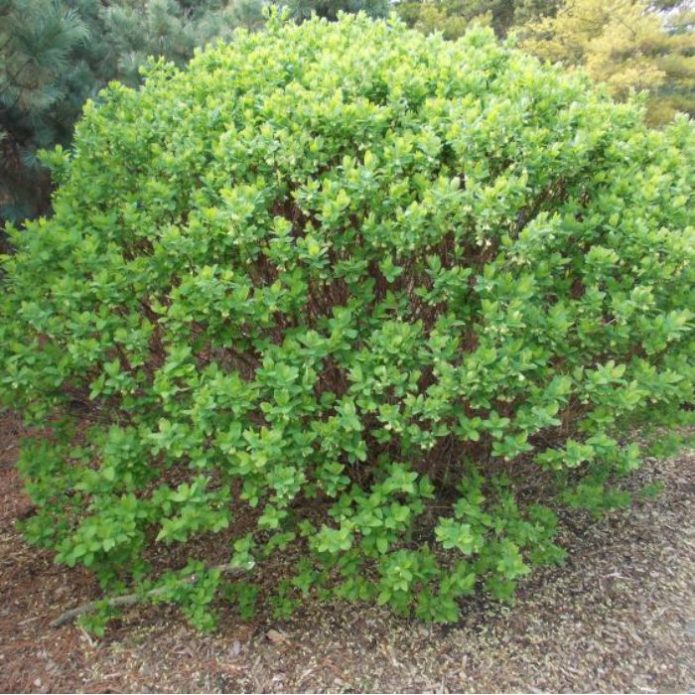
The honeysuckle bush is shaped like a ball. During the flowering period, it will grow all over with small flowers.
The time for the second pruning comes after the vines bloom. It's late June - early July. During this period, the very peak of the thickening of the honeysuckle has already passed, gaps will appear among the green mass, which will help determine the location of the cut of the extra branches. With this haircut, the lower young shoots and the tips of those that have gone beyond the picture are removed. At the same time, the old supporting branches are left - they will serve as a frame for the bush and give it the necessary rigidity.
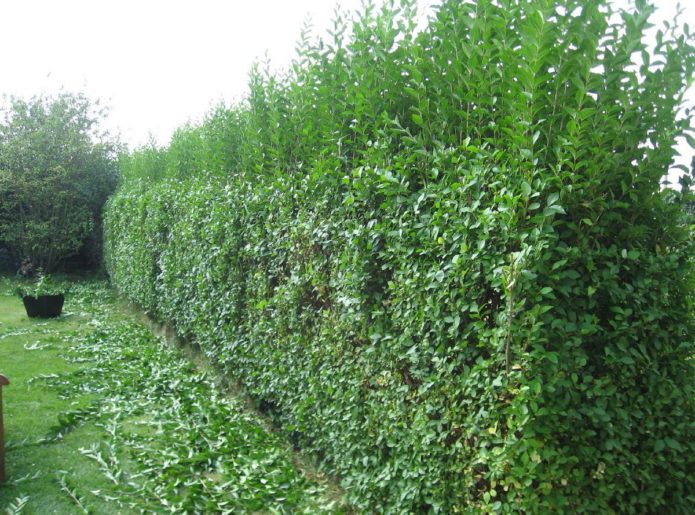
When trimming decorative honeysuckle in summer, the tops of the branches that protrude beyond the edge of the pattern are removed
It is advisable to carry out the third pruning in the fall after the foliage is dropped by the bush. At this stage, it will look like the usual sanitary and wellness procedure already described above.
Photo Gallery: Examples of Formative Pruning of Honeysuckle and Its Use in Landscaping
- Blooming honeysuckle fence is not the only solution for garden design
- Such a liana is great for decorating a gazebo or masking flaws on the wall of the building.
- A liana attached to the wall of the house can become a bright spot in the design.
- Even a pretty arch can be built from honeysuckle
Shortening pruning of seedlings after planting
The answer to the question about the need to trim the crown of a seedling after planting in the ground is far from unambiguous. There is an opinion that the crown, even if it is small of 5-6 lashes, will take the juices from the plant, and this will slow down the time of its rooting. But there is also the opposite reasoning, standing on the protection of the lashes of a young plant from pruning immediately after planting and, in general, in the first year of its life.
What strategy to choose so as not to harm honeysuckle? In these cases, the “golden mean” rule always works well. Let's voice its aspects:
- A young plant is planted in open ground with no more than 4-5 frame branches of the second or third year of life.
- The crown of a young seedling is not yet strong enough to take away the main juices from the roots of the plant.It will not in the least prevent them from taking root properly. But it will not give birth to many shoots, because without pruning, there will be no incentive to give birth to them. In these cases, gardeners recommend making selective crown pruning and carrying it out only on 2-3 out of five frame branches.
- During the active summer growing season, it will be possible to compare the development of branches with and without a trimmed crown. There will be no damage in any case. The experiment will only show how quickly the honeysuckle forms and spreads its lashes. In the fall of next year, such a shortening pruning on the branches bearing fruit of the second year of life will already be mandatory.
In general, pruning honeysuckle is a whole science. And the more you do it, the better you know the features and moments of the behavior of honeysuckle in certain circumstances. Do not be afraid to damage your plants by pruning. On the contrary, in some cases it will become the only correct measure to improve the health of the bush and stimulate it to abundant fruiting.
